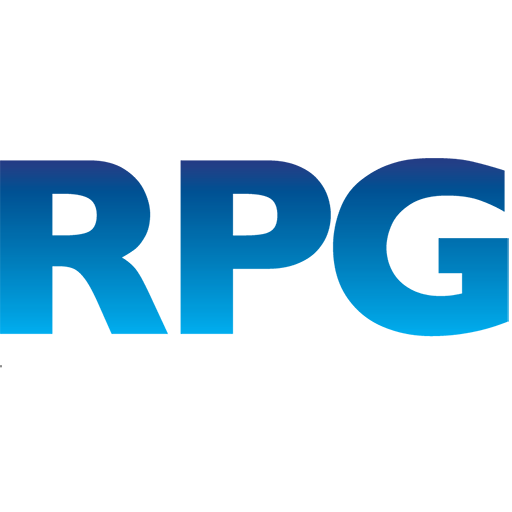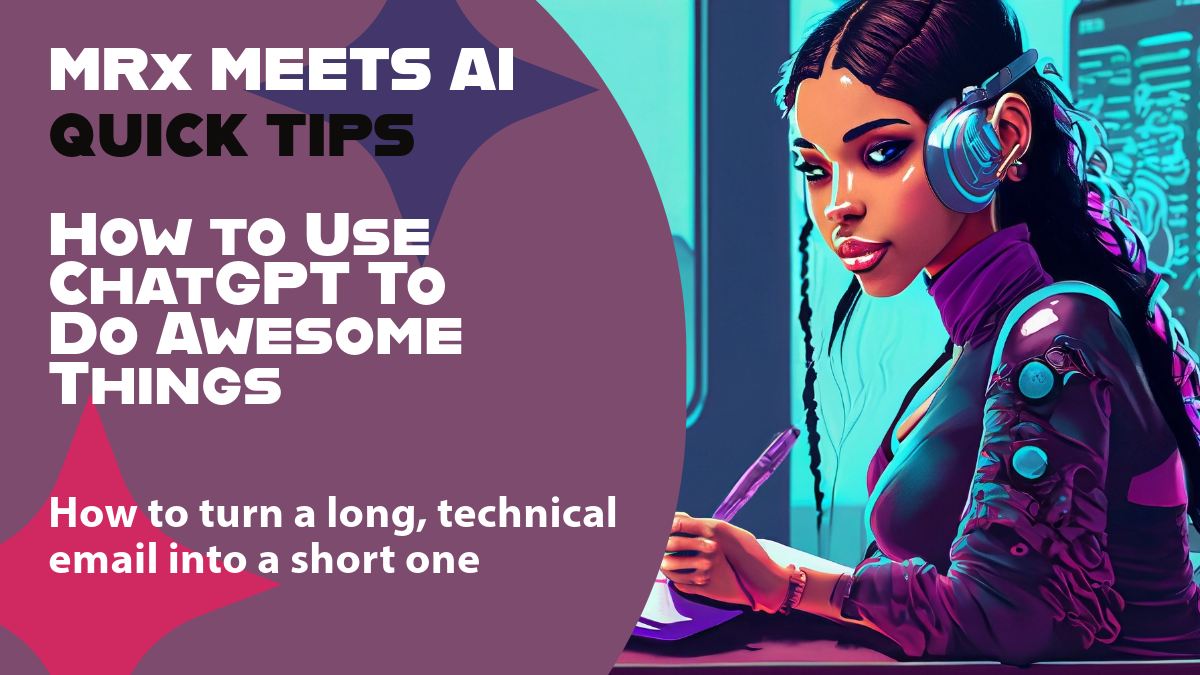I’ve been speaking to many research professionals recently who are interested in checking out generative AI tools like ChatGPT, Stable Diffusion and Midjourney, but who are hesitant to do so because they don’t have a guide to help them through it. So, I’m here to help!
Since not everyone has time to watch my longer videos, I’m also creating a series of shorter ones that are focused on specific tasks. Here’s the first in the series:
Here’s the series playlist for more. Enjoy!
https://www.youtube.com/playlist?list=PLvmig1ZWcorLxwPIldFiB03fyKpx4yKjs
SCRIPT:
Hey folks, Sean Jordan from the Research & Planning Group here. And I’m going to take a couple of minutes to show you how to use ChatGPT to make you a lot better at email, especially if you’re like me and tend to write a lot of detail when someone asks you a question.
There’s an old saying you might have heard that, “I didn’t have time to write you a short letter, so I wrote a long one.” The idea of the quote is that being concise and to the point takes more time and attention than simply writing out all your thoughts. But what if you could have ChatGPT take those longer thoughts and distill them down into something simple?
(More detail on that quote here: https://quoteinvestigator.com/2012/04/28/shorter-letter/)
Here’s an example. I’m a marketing research professional, and I’ve received an email from a client asking me to explain a statistical question in a report I wrote, and I, being a researcher, want to explore every avenue that question affords. My response is not very elegant, nor is it brief. I go into a lot of exciting detail that really interests me.
But what if it’s not relevant to my client? Here’s how I can make things easy on them: by having ChatGPT write up a tl;dr version for me.
All I have to do is write a prompt that says,
I’m going to share an email exchange with you between a client and myself. The client is asking a question and I’m providing an answer. Please help me shorten my answer to no more than two paragraphs, but please keep the writing style similar to my own.
I then copy in the exchange below.
Hey Sean,
I received the report, but I have a question. On page 16, you mentioned that 16% of consumers named Brand A first and 32% of consumers could name brand A in total, but on page 18, you say that 78% of consumers are aware of Brand A and that they were all invited to give additional feedback about it. Did I miss something? What happened to the other 46% of consumers who didn’t mention Brand A the first time?
Thanks!
-The Client
Thanks for asking that question. What you’re looking at are actually two entirely different statistics with two different meanings. Let me see if I can explain it for you in more detail.
Page 16 reports the unaided top of mind awareness that consumers express for marketplace brands. All of the consumers who participated in the study were given an open-ended prompt and asked to name the brand that was most familiar to them. The 16% you referred to named Brand A as their first choice, and we know that because we analyzed all of the open-ended results and categorized them.
But there’s a second statistic on Page 16 that’s also important, which is the total unaided awareness, and that comes from consumers mentioning Brand A as a second or third choice they can recall. That is the number the 32% represents. I think it’s actually interesting because it shows that a third of the marketplace is very familiar with Brand A and of them, half of consumers would select Brand A as their default choice when the category comes up. You can see a similar pattern with Brand B, but Brand C really fizzles out after the top of mind mention, and Brand D is only mentioned as a second or third choice.
As for Page 18, that 78% you referred to refers to the total aided mention statistic we generated for Brand A, which comes from a question where we asked consumers to tell us whether they knew about Brand A because they’d purchased it (35% of consumers), seen it on the shelves but not purchased it (26% of consumers) or simply thought it sounded familiar (17% of consumers). Those three numbers add up to 78%.
We had a whole block of questions about Attributes for Brand A, and we only wanted to ask those for people who had some familiarity with the brand. The reason we selected those who reported an aided awareness rather than an unaided awareness for this block of questions is because we knew there would be many people for whom Brand A was not a top three choice in such a crowded product category, but that they’d still have opinions about it.
I also think it’s really interesting that 35% of consumers said they’ve used Brand A, and 32% named it unaided. I’ll have to look to see what the degree of overlap is there, but I’ll bet it’s pretty high!
Anyhow, I hope that answers your questions. Please feel free to write me again if you have any more!
Sincerely,
Sean @ RPG
Let’s see what ChatGPT comes up with. And wow! I can already tell from reading it that it’s basically the same information, but condensed into a more readable two paragraphs without all my musings. That’s awesome.
Let’s try one more tweak. Let’s say I know my client is not a researcher and I want to ensure my response is simple and easy to understand. I actually learned way back in journalism school that a lot of news organizations like to keep their reading level around the seventh grade so their content is easy to read.
MORE ANALYSIS HERE: https://towardsdatascience.com/how-smart-is-your-news-source-1fe0c550c7d9
So I write the prompt,
Rewrite the above response as if the reader is a seventh grader.
I definitely want to check the response to ensure that it’s not trying to draw analogies to the sorts of things that would resonate with a seventh grader, but it looks like it did a good job of keeping things concise. Wonderful! I just need to tweak this up, copy it for my client and then hit send. Or, if I want to include all that detail, I can just say “IN SUMMARY” above the ChatGPT piece and “MORE DETAILED RESPONSE” above my original. That way, I get the both of best worlds.
And I hope you got a useful tip! Please remember that my ethical guideline is to let people know if you’re using AI to author something, even if it’s just a summary of your own work. Remember too, to be careful about what you upload directly into ChatGPT and always disguise anything sensitive.
If you enjoyed this, be sure to share it with someone else who can use it and also hit the like button, subscribe to my channel and leave a comment to share some of your fun tips for using ChatGPT!
See you next time!


